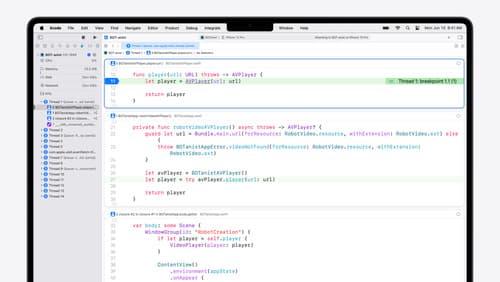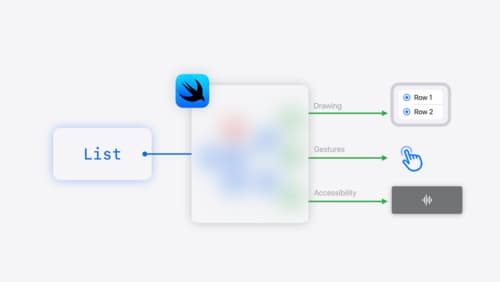how to use property wrapper in ios swift
Asked on 2025-06-04
1 search
To use property wrappers in iOS Swift, you can encapsulate logic for managing stored values by intercepting the calls to read and write a property. This allows you to implement reusable logic that can be applied to a property with a simple annotation.
For example, in the session A Swift Tour: Explore Swift’s features and design, property wrappers are discussed as a way to build expressive, type-safe APIs and eliminate boilerplate code. A property wrapper can be applied to a property to manage its stored value, as demonstrated with the argument property wrapper from the Swift ArgumentParser package, which designates that a property stores the value of a command line argument.
If you want to see this in action, you can check out the session A Swift Tour: Explore Swift’s features and design starting at the "Extensibility" chapter.

A Swift Tour: Explore Swift’s features and design
Learn the essential features and design philosophy of the Swift programming language. We’ll explore how to model data, handle errors, use protocols, write concurrent code, and more while building up a Swift package that has a library, an HTTP server, and a command line client. Whether you’re just beginning your Swift journey or have been with us from the start, this talk will help you get the most out of the language.

What’s new in Xcode 16
Discover the latest productivity and performance improvements in Xcode 16. Learn about enhancements to code completion, diagnostics, and Xcode Previews. Find out more about updates in builds and explore improvements in debugging and Instruments.

SwiftUI essentials
Join us on a tour of SwiftUI, Apple’s declarative user interface framework. Learn essential concepts for building apps in SwiftUI, like views, state variables, and layout. Discover the breadth of APIs for building fully featured experiences and crafting unique custom components. Whether you’re brand new to SwiftUI or an experienced developer, you’ll learn how to take advantage of what SwiftUI has to offer when building great apps.
